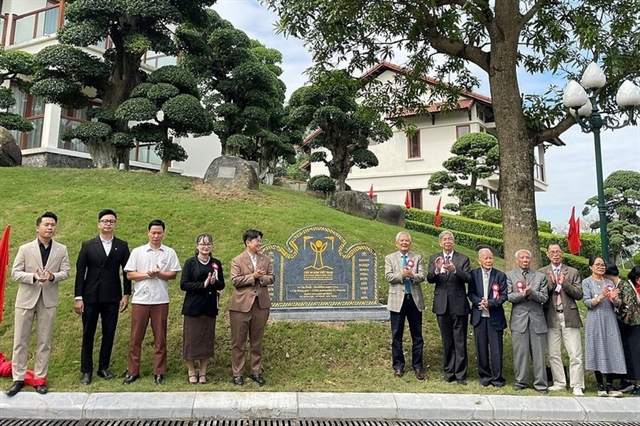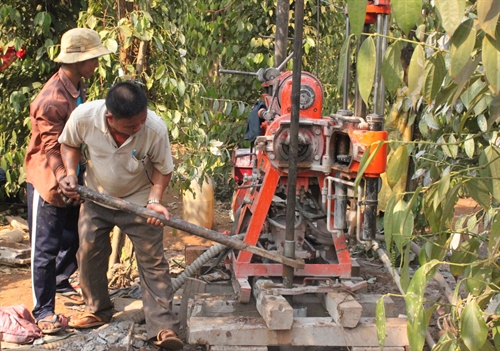 Environment
Environment

China has decided to double the release of water from its Jinghong reservoir on the Mekong River to help Việt Nam mitigate the impact of a severe drought in the Mekong Delta provinces.
 |
| Farmers in southern Bình Phước Province’s Hưng Phước Commune attempt to drill a freshwater well to save their pepper trees. To aid Việt Nam in battling with historic drought conditions, China will double the amount of water released from Jinghong reservoir. — VNA/VNS Photo |
HÀ NỘI – China has decided to double the release of water from its Jinghong reservoir on the Mekong River to help Việt Nam mitigate the impact of a severe drought in the Mekong Delta provinces.
Việt Nam welcomes the planned release, but it is believed to be only a short-term solution for the current situation, and the country has to seek longer-term solutions.
News of the extra water was released at a press conference held by the Ministry of Natural Resources and Environment last week.
A document sent by China’s Ministry of Water Resources to the Mekong River Commission Secretariat and the Việt Nam National Mekong Committee on March 15, says that the drought has worsened recently in the Mekong Basin.
China has decided to implement an emergency water supplement to the Mekong River by increasing the discharge from the Jinghong reservoir to 2,000 cubic metres per second between March 15 and April 10, 2016. This is about twice the volume of the same period last year.
Speaking at the conference, Trần Đức Cường, deputy chief of the Việt Nam National Mekong Committee’s Office, said that hopefully 27-54 per cent of the total water released would reach Việt Nam.
The water would first have to run through Laos and Thailand, two nations that were also currently coping with severe drought, he said. It added that it would take at least two weeks from discharge until the water reached Việt Nam.
According to Đào Trọng Tứ from the Việt Nam River Network, the water had to travel a distance of over 4,000km from the Jinghong reservoir to reach Việt Nam.
To ensure the maximum amount of water reaches the country, the Việt Nam National Mekong Committee submitted a request to the Mekong River Commission to require upstream countries to create the most favorable water flow conditions possible.
Cường said analyses from the committee found the water flow from upstream of the Mekong River during the dry season of 2015-16 decreased up to 30 per cent compared to the same period last year.
The two main reasons behind the lack of water flow was that rainfall was half as much as is usual this season, and that there was little water flowing from Cambodia’s Tonlé Sap River to the Mekong River during the dry season of 2015-16.
Usually, water from the Tonle Sap River would flow into the Mekong River during the dry season. However, there was no flood season in Cambodia in 2015, so the Tonlé Sap River did not store water to release back into the Mekong River as usual.
Following orders from Prime Minister Nguyễn Tấn Dũng, Vietnamese ministries, sectors and relevant agencies have joined hands to battle the most severe drought and saltwater intrusion within a century.
Lê Thanh Hải, director of the National Centre for Hydro-Meteorological Forecasting said the drought would last until June due to strong El Nino effects that started in 2014. The drought was forecast to become more severe in the Mekong Delta provinces in the coming months. — VNS




